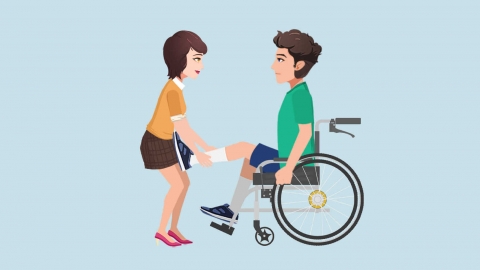How can patients with underdeveloped brainstem improve their motor abilities?
Generally, patients with underdeveloped brainstem can improve their motor abilities through balance training, muscle strength training, coordination training, gait training, functional training, and other similar methods. If there are any concerns, it is recommended to seek medical advice in advance. Detailed explanations are as follows:

1. Balance Training: The goal of balance training is to enhance the patient's balance and stability. Practicing standing, single-leg standing, and using balance boards can help strengthen core muscles and reduce the risk of falling. These exercises should be performed progressively under the guidance of a physical therapist to ensure safety and effectiveness.
2. Muscle Strength Training: Muscle strength training involves performing targeted exercises to enhance muscular strength. This may include various resistance exercises using elastic bands, dumbbells, or body weight. Strengthening muscles helps improve the patient's overall motor ability and independence in daily activities.
3. Coordination Training: Coordination training aims to improve the patient's motor coordination and fine motor skills. Exercises such as finger movements, catching and throwing balls, and alternate stepping can help improve hand-eye coordination and limb synchronization. These exercises should be conducted under the guidance of an occupational therapist to gradually enhance the ability to perform complex movements.
4. Gait Training: Gait training focuses on improving the patient's walking ability. Walking within parallel bars, using walking aids, and performing exercises on treadmills can help improve gait patterns, increase stride length and speed, and enhance walking stability and efficiency. Gait training usually requires professional guidance from a physical therapist.
5. Functional Training: Functional training aims to improve the patient's practical abilities in daily life. This includes exercises simulating daily activities such as climbing stairs, transitioning from sitting to standing, and carrying objects. Through these exercises, patients can better adapt to various demands in daily life and improve their self-care abilities.
In daily life, it is important to provide sufficient care and affection to the patient, helping them establish good living habits and self-care abilities.




